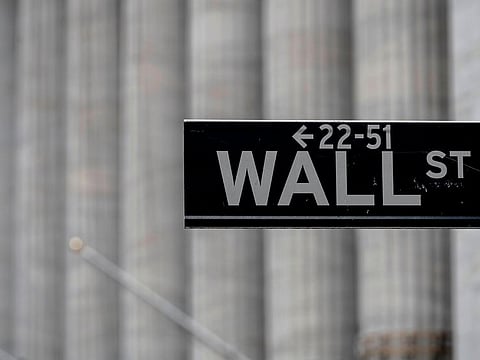Coronavirus: Global stocks dive as some US states see spike in COVID-19 cases
Dow Jones down 6.9%, bourses in Paris, Frankfurt, London down at least 4%

New York: After a rally lasting more than two months, Wall Street hit a stumbling block Thursday as spiking coronavirus cases in several US states helped spur the worst sell-off since March, when market turmoil over COVID-19 was at its peak.
The Dow Jones Industrial Average finished down 6.9 percent, a loss of more than 1,850 points, to 25,128.17, also weighed down by worries over excess valuations and another massive number of US jobless claims.
Bourses in Paris, Frankfurt and London all plunged at least four percent.
“The market got too far ahead of itself,” said Markets.com analyst Neil Wilson.
In the US, stocks have followed a fairly unbroken path higher from the market’s worst days in March, fueled by optimism over the reopening US economy and the expected boost from aggressive stimulus measures approved in Washington.
But US Federal Reserve Chief Jerome Powell offered a sober outlook on the US economy during a press conference Wednesday after the central bank signaled it planes to keep interest rates low for the next few years in light of the shaky recovery.
Analysts also fixated on increasingly worrisome trends on new coronavirus cases in several states, including Florida, Arizona and Texas.
“Wrong direction,” the Houston Health Department in Texas said in a tweet Thursday that showed recent trends in the city. “If we don’t take the increasing #COVID19 cases seriously NOW, we may soon end up in a deadly situation.
“Wear a mask, social distance, wash hands & get tested.”
LBBW’s Karl Haeling said “It’s concerning that a lot of states are seeing a spike in rates.”
“It’s hard to interpret whether that represents a real increase, or just the fact that more states are testing people now,” he told AFP.
Too much optimism?
Heading into this week, analysts had begun describing equity valuations as “frothy” following steady gains since March, saying they do not reflect the grinding recovery many economists anticipate.
“We’ve been talking about the optimism trade for a while, and it just ran into some facts,” JJ Kinahan, chief market strategist at TD Ameritrade, said in a note.
“The facts are we’re not fully reopened and businesses aren’t all the way back,” Kinahan said. “Basically, the market got out a little over its skis.”
Losses were broad-based, but some of the worst affected sectors included banks such as Bank of America, down 10.0 percent, oil services companies like Halliburton, down 15.4 percent, and travel-oriented companies including United Airlines, down 16.1 percent and Marriott International, down 10.9 percent.
Boeing dove 16.4 percent, hit by the pullback in the broader market as well as news that 737 MAX contractor Spirit AeroSystems had furloughed staff and halted work on the MAX at Boeing’s request. Spirit fell 15.6 percent.
Back in Europe, shares in German airline Lufthansa also dived in Frankfurt by around 10 percent after the company said it would axe 22,000 jobs.
Sign up for the Daily Briefing
Get the latest news and updates straight to your inbox



